A fascinating and sustainable practice, composting turns household waste like banana peels into rich, nutritious materials to feed plants.
When added to a compost or food waste bin or worm farm, they contribute mounds of richly fertile materials thriving with living organisms that are perfect for creating healthy, vibrant soil.
And if you don’t have a food waste bin or worm farm already, there are easy workarounds.
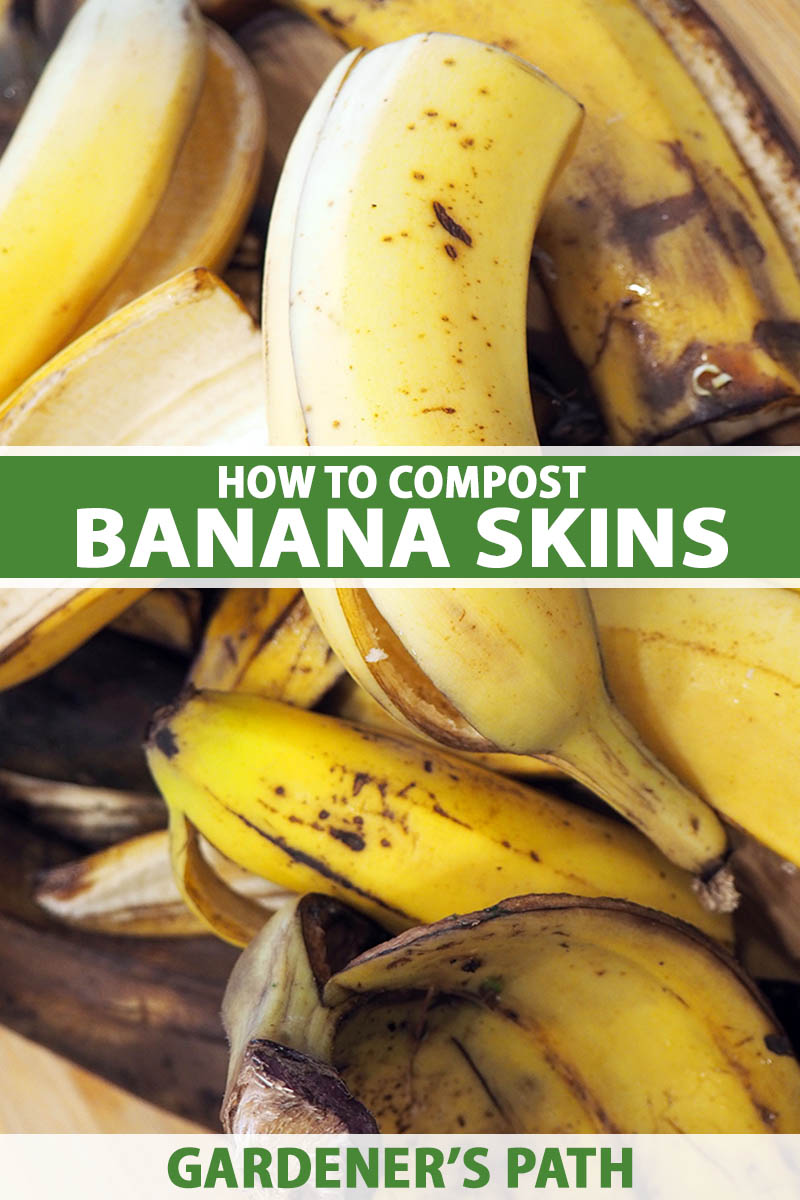
We link to vendors to help you find relevant products. If you buy from one of our links, we may earn a commission.
These soft-skinned fruits break down quickly and their mineral elements can be harnessed in a few different ways, such as drying them to make slow-release chips or brewing a batch of fertilizer tea for liquid applications.
Whatever way you choose to use them, it’s a positive step in reducing waste and a smart, economical, and fun way to feed your plants!
Are you up for more sustainable living and cultivating healthy plants?
Then don’t let the benefits of banana peels slip away… Join us now to discover four easy ways to compost banana peels that your plants will love!
Here’s what’s ahead:
What You’ll Learn
Benefits of Banana Peels
Banana peels contain a wide array of important minerals for the garden, such as calcium, magnesium, phosphates, potassium, sodium, sulfur, and so on – all of which can benefit healthy growth.
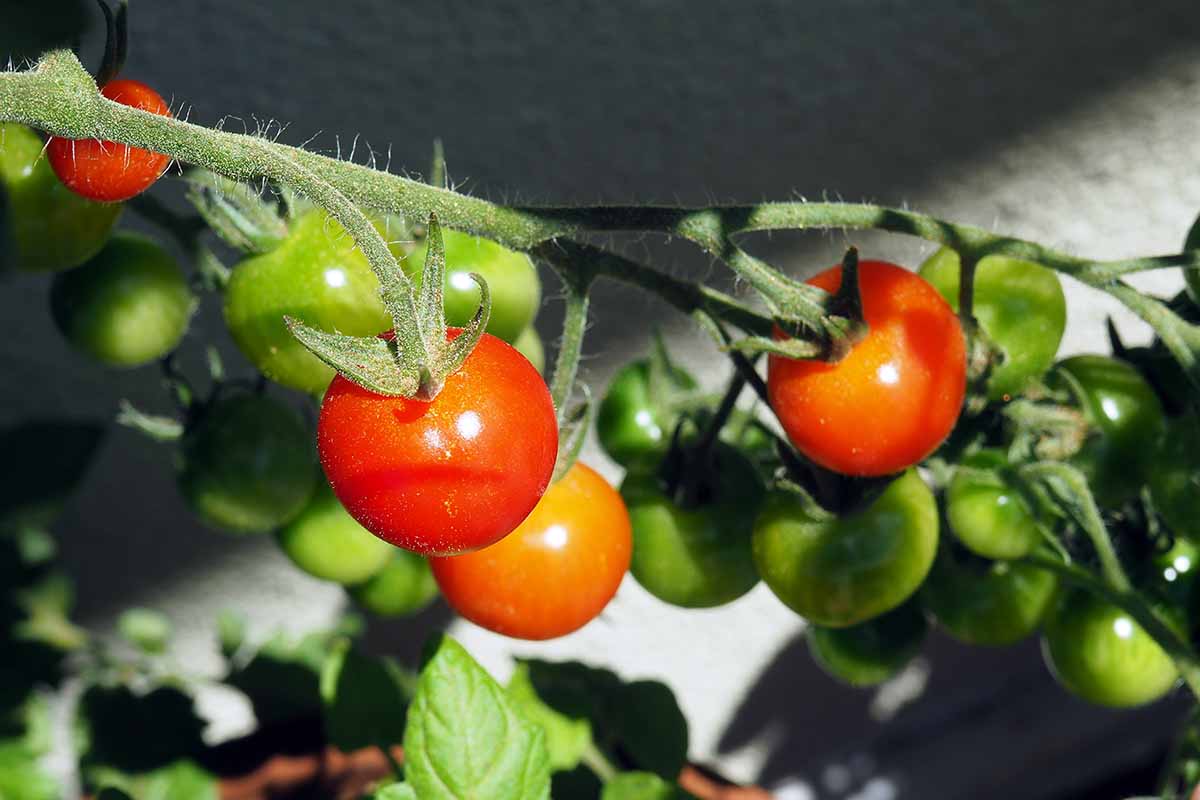
When used in compost or as a mulch, the soft skins break down quickly, adding organic materials that improve soil tilth and texture, retain water, and lighten heavy soils.
And in worm farms, they make a fast turnover into rich castings.
In addition to enriching the soil, these valuable nutrients can be harnessed for use in other easy applications such as a homemade liquid fertilizer or slow-release pellets.
4 Home Composting Methods
Have you been saving up those discarded yellow and brown skins? Great!
Now, let’s look at four easy ways to compost banana peels.
1. Brew a Spot of Fertilizer Tea
An easy way for non-composters to put the benefits of these fruit skins to use in their gardens, this healthful liquid fertilizer is ready in just a couple of days.
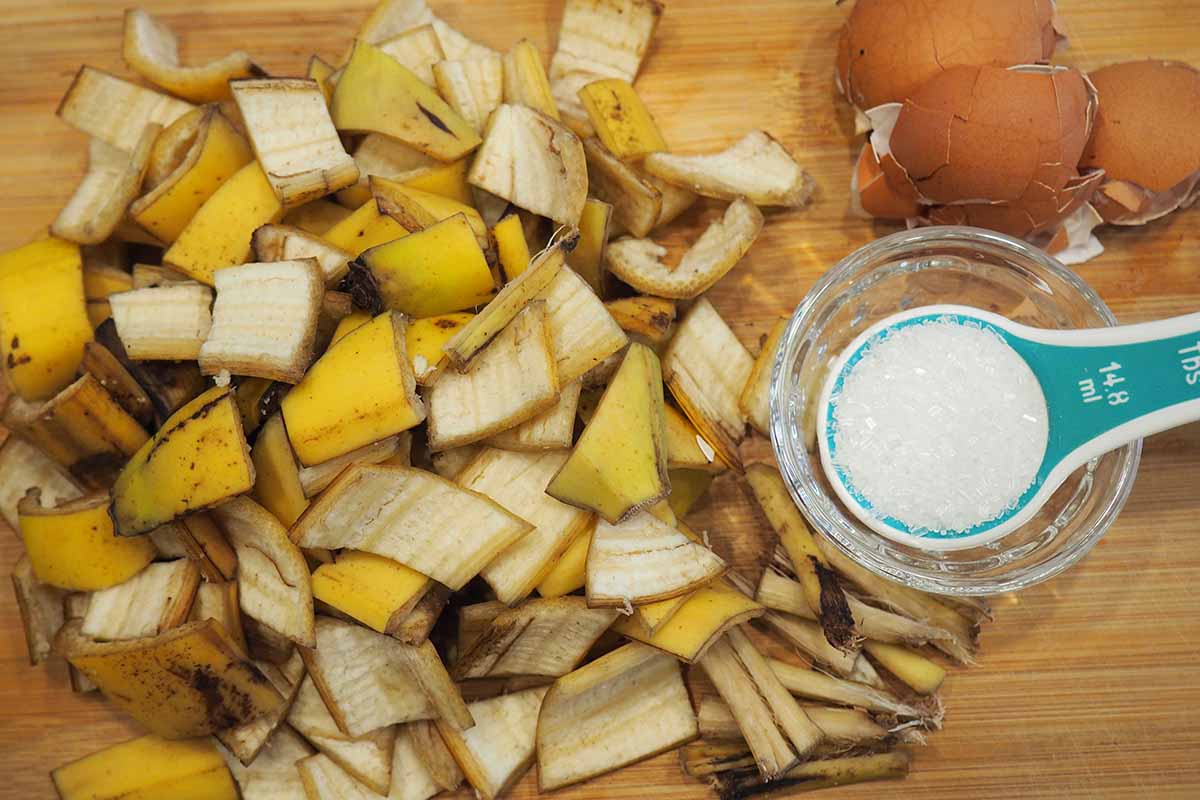
Begin by cutting the skins into small pieces, about one-half to one square inch in size.
Place them in a bucket or jar and cover with water.
Place a lid on the container and set it in a warm spot out of direct sunlight. Let the skins brew for two or three days, stirring once or twice a day.
Strain with a sieve into a watering can and use the liquid to feed your plants.
To add even more nutrients to your brew, add a handful of crushed dried eggshells along with the skins – the eggshells add calcium.
You can add the skins (and eggshells) you’ve strained out to your compost bin or worm farm. If you have neither, simply dig the skins into a patch of free dirt in the garden for zero waste.
If you don’t gather enough skins at one time to brew a bucketful, chop them up and place them in a resealable bag or container.
Freeze until needed, then place the frozen chips into your brewing container and cover with water.
2. Dry into Slow-Release Flakes
To add small amounts of nutrients to plants when they’re watered, make your own slow-release flakes.
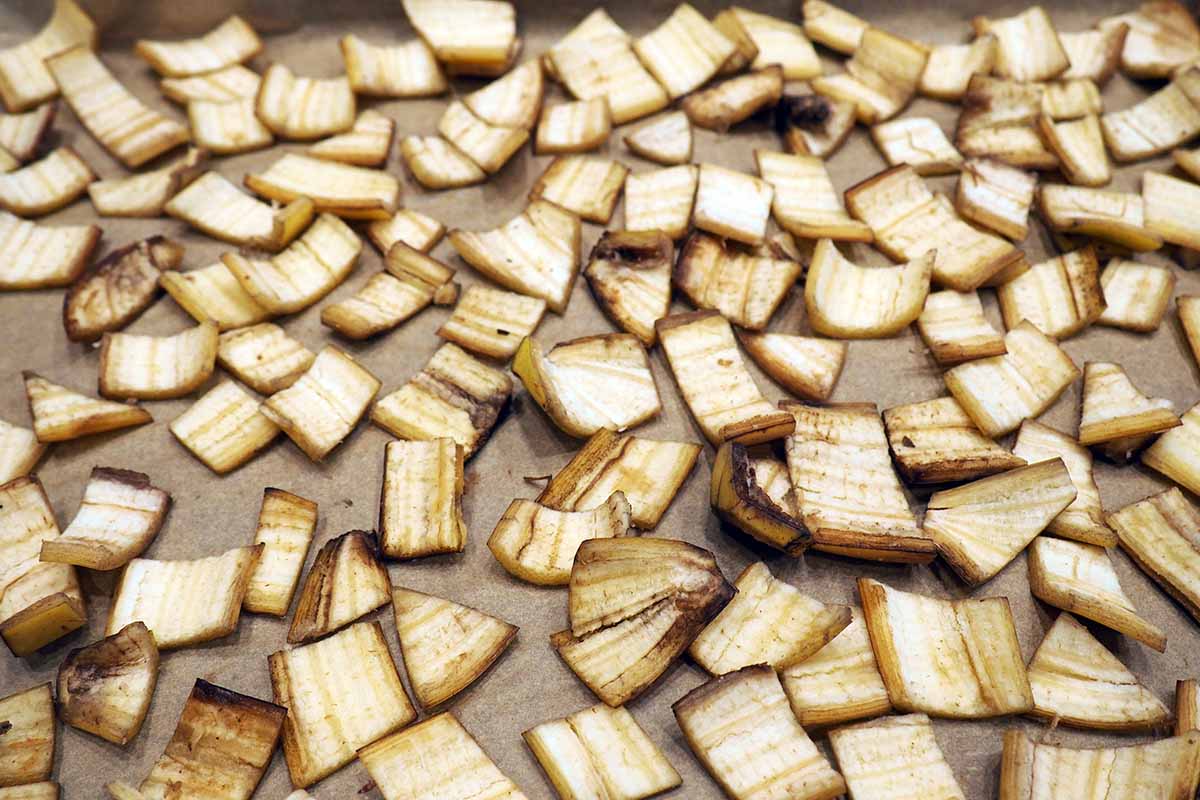
Chop the skins into small pieces of one-half to one square inch.
Cut the fibrous neck sections vertically into quarters to speed their drying.
Add a sheet of parchment paper to a baking tray and lay the chips in a single layer.
Allow them to dry in the sun, or dry them in the oven on the lowest setting.
Check every 30 minutes and stir to ensure even drying, which can take up to four hours.
If using frozen chips, allow them to thaw at room temperature. Dab up excess moisture with paper towels before laying on the tray.
Once they’re dry, add the chips to a blender or food processor and pulse until pulverized into a coarse, flaky powder.
Sprinkle the powder over soil surfaces and lightly work into the soil. Use one teaspoon per square foot of soil surface and repeat monthly during the growing season.
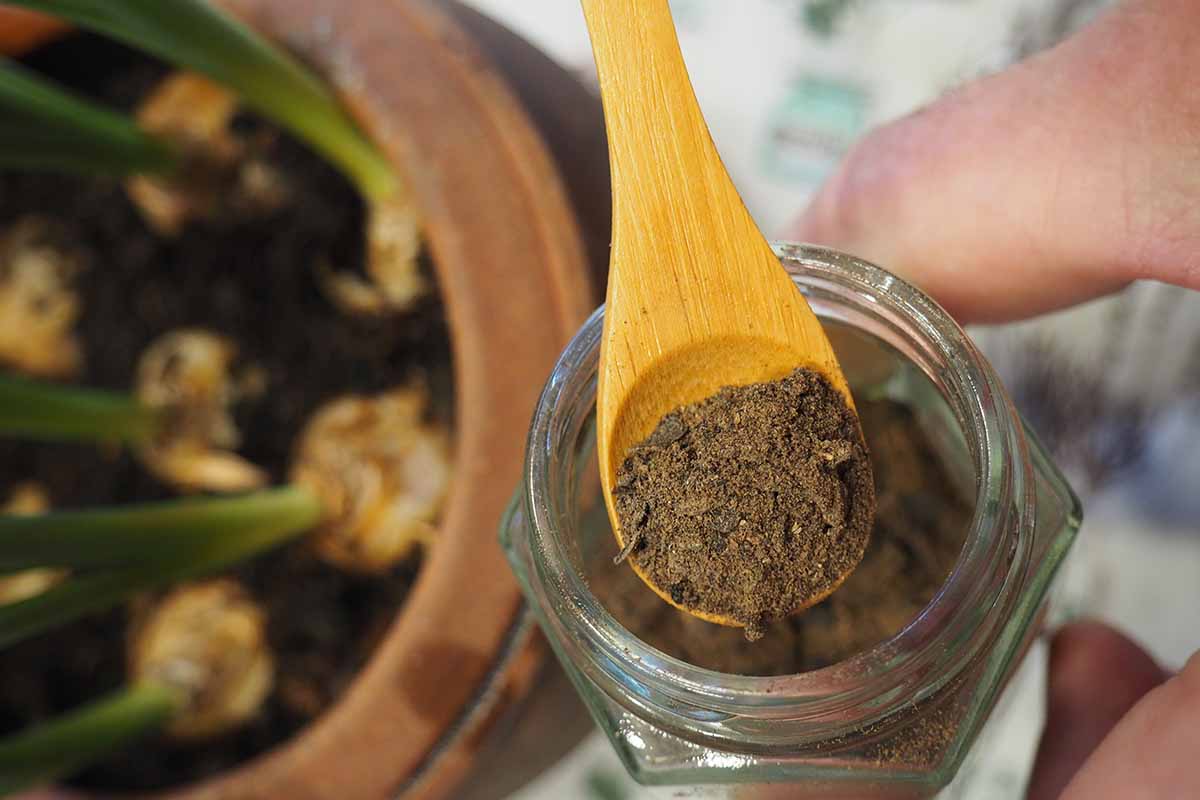
Store leftovers in an airtight container in a cool, dry location.
Slow-release flakes are a treat for air plants (epiphytes) like Tillandsia and other bromeliads that are grown in soilless conditions – simply sprinkle a small amount over the root zone.
3. Make a Mulch
Banana peels also make a good mulch, attracting plant-friendly insects and microorganisms while suppressing weeds and retaining moisture.
Place skins on top of the soil around the base of plants, leaving a four- to-six-inch peel-free zone around the plants’ stems.
Cover with a two-inch layer of mulch, such as grass clippings, leafmold, or straw, to help break down the skins and prevent attracting unwanted insects like fruit flies and wasps.
As the skins decompose, nutrients are released into the soil to feed the plants.
4. Add to Compost Bins
Fantastic for creating rich soil, banana peels are fast to decompose, releasing minerals and nutrients as they break down.
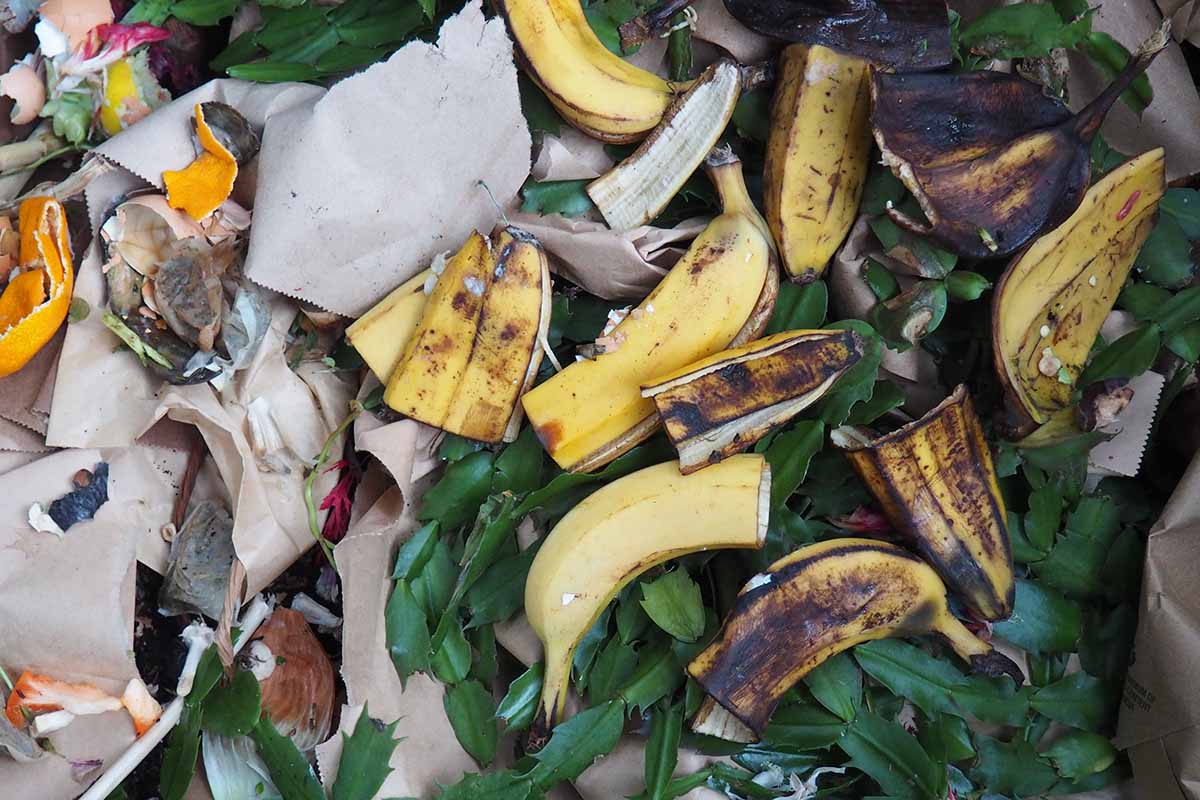
Add them to your bins as they become available, along with your other kitchen scraps.
Fruit and veggie scraps, along with waste materials like coffee grounds, tea bags, and plant trimmings, are considered “green” matter that adds nitrogen to the soil.
To build the needed heat to break down these green materials, layer with “brown” materials, or dry items like leaves, straw, and paper products such as grocery bags.
Turn your layered materials regularly or use a garden fork to poke holes in it for aeration – the mix needs oxygen to break down organic materials.
Also, provide regular moisture for fast and even decomposition.
And for more details on this savvy and sustainable practice, read our guide on the basics of composting.
Zero Waste and Healthy Plants
Instead of tossing your banana peels, use them as a zero-waste way to supply your plants with the nutrients they need for strong, healthy growth.
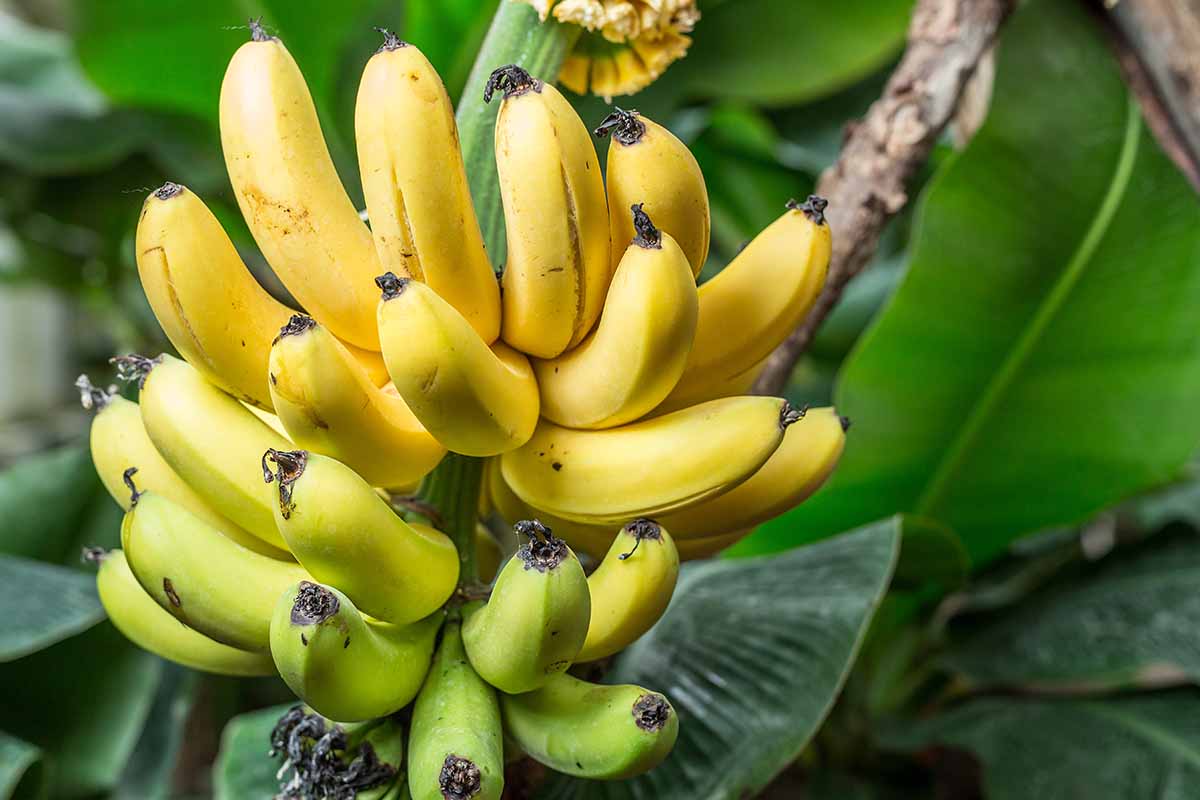
They’re a natural in compost bins and worm farms, and they make an easy mulch around plants.
If you don’t have a compost pile or vermiculture tower going, it’s no problem – brew a jug of liquid fertilizer tea or make slow-release flakes.
Whatever method you choose, your garden – and the local ecosystem – will love the healthy, enriching benefits!
Do you folks have a favorite way to convert kitchen waste into gardeners’ gold? Tell us about it in the comments section below.
And for more smart, eco-friendly ways to feed your garden, check out these informative guides next: